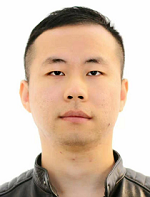- Home >> Latest News
Brainnetome Lecture Series - Computing by modulating spontaneous cortical activity patterns as a mechanism of active visual processing
Speaker: Guozhang Chen, PhD, the University of Sydney Chair: Prof. Shan Yu, CASIA Time: 2020.09.10, 14:00 - 15:00 Venue: The 1rd meeting room, 3rd floor, Intelligence Building

Title: Computing by modulating spontaneous cortical activity patterns as a mechanism of active visual processing
Abstract
Cortical populations produce complex spatiotemporal activity spontaneously without sensory inputs. However, the fundamental computational roles of such spontaneous activity remain unclear. Here, we propose a new neural computation mechanism for understanding how spontaneous activity is actively involved in cortical processing: Computing by Modulating Spontaneous Activity (CMSA). Using biophysically plausible circuit models, we demonstrate that spontaneous activity patterns with dynamical properties, as found in empirical observations, are modulated or redistributed by external stimuli to give rise to neural responses. We find that this CMSA mechanism of generating neural responses provides profound computational advantages, such as actively speeding up cortical processing. We further reveal that the CMSA mechanism provides a unifying explanation for many experimental findings at both the single-neuron and circuit levels, and that CMSA in response to natural stimuli such as face images is the underlying neurophysiological mechanism of perceptual “bubbles” as found in psychophysical studies.
Reference
Chen, G., Gong, P. Computing by modulating spontaneous cortical activity patterns as a mechanism of active visual processing. Nat Commun 10, 4915 (2019).
Biography
Guozhang Chen submitted his PhD thesis in neurophysics in 2020, from the school of physics, the University of Sydney. Before that, he pursued master and bachelor degrees about electronic science and technology in University of electronic science and technology of China.
